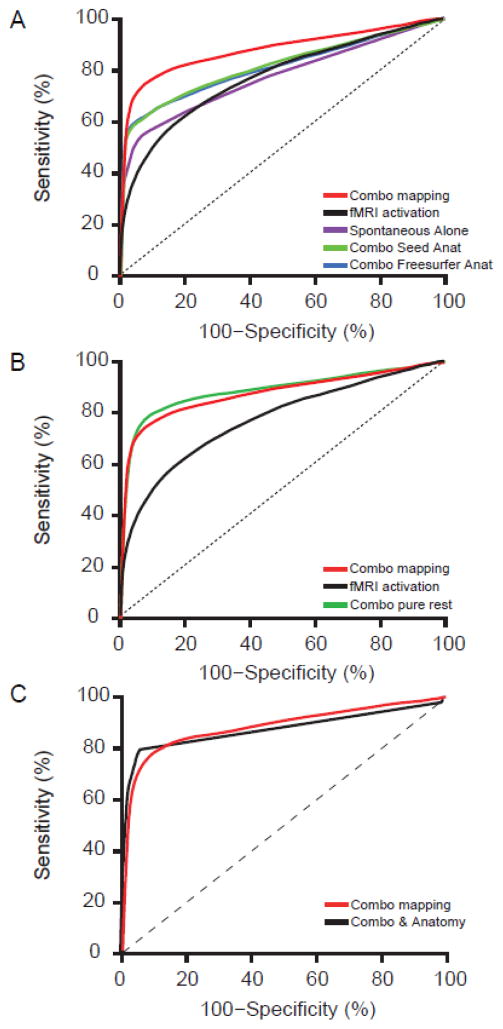Figure 4.
Comparison of combination mapping to alternative mapping approaches using receiver operating characteristic (ROC) curves. The current combo mapping algorithm (red) outperformed traditional task activation mapping alone (black), spontaneous activity mapping alone (purple), a combination of task activation and anatomical parcellation using FreeSurfer (blue), and a combination of task activation and a priori anatomical regions of interest in the hand and tongue areas (green) (A). Combo mapping based on underlying spontaneous activity recorded during task (red) was similar to combo mapping based on “pure” spontaneous activity acquired in a dedicated resting-state scan (green) and both were superior to traditional task activation mapping (black) (B). Adding anatomical parcellation to the current combo mapping approach (black) provided little benefit beyond standard combo mapping combining task activation and underlying spontaneous activity (red) (C).

